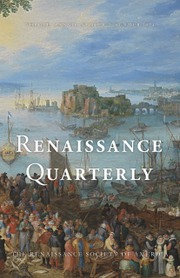“Oh, Claude is our vielschreiber,” once said a friend of mine who was at the time teaching at Yale, Palisca’s home institution for over thirty years. The remark was made partly in jest, partly in admiration, and partly in envy — but not at all in disparagement. Claude Palisca was indeed a prolific scholar, but the steady stream of books, articles, editions, and reports that he produced over the years from 1954 into the late ’90s is far more notable for its high quality than for its admittedly impressive bulk. His work is centered in European music, music theory, and musical thought in the period mentioned in the title of Music and Ideas, a two-century span in which he chronicles and wisely evaluates the extraordinary mix of tradition — preservation of the ars perfecta of ca. 1520 — along with novelty —the Nuove musiche and the favole (later to become opera) in musica of a century later.
We all know what a great debt we owe to Claude Palisca. What came as a surprise was the news that two more books by him were to appear after his death in 2001: the present volume, newly out, and a translation of Vincenzo Galilei’s Dialogo della musica antica e della moderna, published in 2003 as a volume in Yale’s Theory Translation series. These we now have, thanks to Claude’s continuing scholarly drive, cut short only by death; to the devoted care of his wife Elizabeth Keitel; and to the selfless work of Thomas Mathiesen, himself a distinguished scholar in the field of ancient Hellenic music, a subject heartily approved of and thoroughly familiar to Palisca the humanist. How much work Mathiesen had to do to get these volumes, incomplete at the author’s death, to Palisca-level publishable shape he does not tell us; I suspect that it was enough to justify more than the small-print references to him as editor which appear only on the dust-jacket of Music and Ideas.
Mathiesen says of this book that it is “a kind of summa of [Palisca’s] life’s work” (viii), meaning that its eleven compact chapters recapitulate the main subjects that interested him. I would modify this slightly by changing summa to sumula, the latter a term used by late medieval writers to indicate a work broad in scope but brief in extent. The opening chapter, “Musical Change and Intellectual History,” sets forth one of Palisca’s basic themes, the various strands of ancient musical thought as they affected Renaissance culture, from cosmology to the emotional and constructive power of rhetorical language. It is no surprise to find that these two topics are the subjects of chapters 2 and 11, respectively. Even chapter 8, “Music and Scientific Discovery,” ostensibly the furthest removed from classical antiquity, stresses the importance of Greek acoustical thought and experiment.
Humanist interest in, often rising to dependence on, ancient thought, is thus a central theme in this book as it is in Palisca’s work in general. Yet where the topic at hand has no substantive connection with antiquity, Palisca does not try to make one up but moves freely through his chosen subject. Chapter 9, “Ancient and Modern Styles and Genres,” is despite its title one such subject. Here the ancients are not toga-clad figures from the distant past but proponents of the contrapuntal style of the sixteenth century, music controlled by a highly refined set of technical rules. Their modern opponents, subscribing to a manifesto issued by Claudio Monteverdi, proclaimed a new style, the “seconda pratica,” in which musical elements were held subordinate to the expressive rhetorical values of the text: the rules, in other words, could be broken. The tacit assumption of both parties was that the music of their time was superior to that of antiquity, which was for practical purposes essentially lost.
Palisca tells this story well; as one might expect, the level of the book as a whole is very high. Still, there is a slight but unavoidable disappointment, for those of us who have followed Palisca’s work over the years, in reading these pages. The chapters are too short, and there is not enough that is new in them, to satisfy the serious scholar or even the enterprising graduate student. Has Claude Palisca, one of the most admired musicologists of his generation, let us down?
The answer is, surely not: this reviewer, at any rate, was simply expecting the wrong thing. I should have remembered Palisca’s lifelong commitment to pedagogical writing, an interest both idealistic and practical. The author of much specialized, sometimes recondite, scholarly work also wrote the enduringly successful textbook Baroque Music; the editor of Latin and Greek treatises also carried on the work of Donald Grout in a series of new editions of our discipline’s flagship single-volume work, A History of Western Music. What he and his editor have given us in Music and Ideas is at once a reader-friendly digest — a sumula — of, and an introduction to, his scholarly oeuvre. I can imagine assigning a group of seminar students individual chapters, to read and then to follow up on by delving into Palisca’s books and articles on the relevant topics, in the process finding a paper topic of their own. Just thinking about this makes me want to organize such a class.


